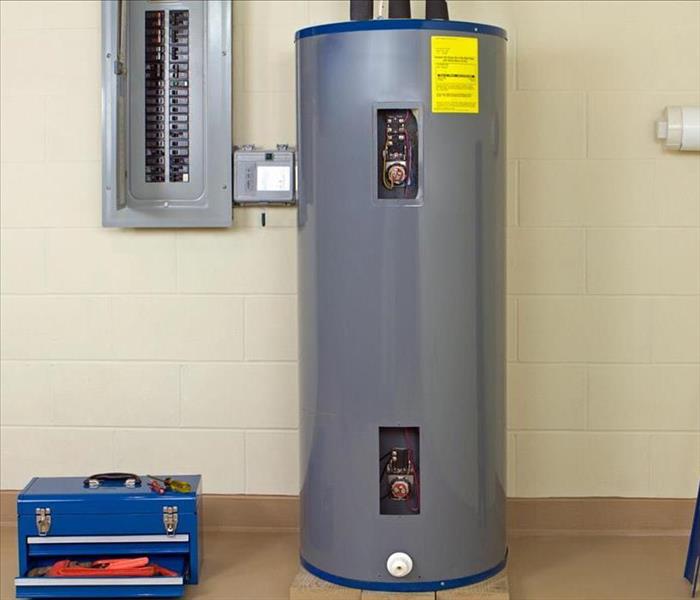How do I protect my water heater in cold weather?
12/1/2021 (Permalink)
This holiday season, having a damaged water heater is the last thing you want. Dishes are more difficult to wash when you have to heat water on the stove, and guests don't like cold showers. However, you may be on the verge of a water heater meltdown without even realizing it.
The water in your plumbing is colder now that winter is near. This implies that your water heater will have to work a little longer and harder to reach the desired temperature. Furthermore, the temperature difference between the hot water at the top of the tank and the cold water at the bottom is higher, forcing the tank to flex more.
With the return of the kids from college, the arrival of family for an extended visit, the additional holiday dishes, and laundry, it will be put to even greater use. If your water heater is older, this could cause it to overheat.
Here are tips on how to prepare your water heater for the holiday season
Insulate your water tank and pipes.
As the temperature cools, it's critical to maintain your hot water as hot as possible. Loss of heat can drive up utility costs by consuming more power and gas. Heat loss can be reduced by insulating the tank and pipes going away from the water heater. This insulation is generally built into newer water heater tanks, but if you have an older tank, you can buy a tank cover to add an extra layer of insulation to keep hot water hotter. Your plumber will be able to properly measure and install this tank insulation. Otherwise, if you're in the market for a new water heater, look into one of the newer tank heaters with built-in insulation.
Check the anode rod.
The sacrificial anode rod is an important component of tank water heaters because it rusts away and sacrifices itself to prevent rusting in the heater tank. The sacrificial anode rod is placed at the top of the tank and should be checked during the pre-winter inspection. Anode rods are good for five years, although they should be examined once a year. It's time to replace the rod if it's calcium-coated or worn down to less than 1/4 inch thick.
Clean out the tank.
Excess sediment and calcium buildup can coat the tank sides lowering its efficiency and resulting in less hot water. You want to make sure your water heater is running smoothly and efficiently before the colder months of the year arrive. To eliminate buildup and extend the life of the tank, hot water tanks may need to be drained 1-2 times a year. Turn off the water, gas, and electricity to drain the tank. Connect a hose to the drain valve and direct the water to a ground drain. Allow the tank to drain by opening the drain valve and the temperature-pressure regulator valve. Once the tank is empty, flush it with cold water to remove any remaining sediment. Your plumber can also assist you in checking for calcification on the water heater element.
Access the temperature pressure regulator.
If the temperature or pressure in your tank rises too high, this valve on the top or side of the tank automatically releases water. Lift the lever and then release it to inspect the valve. You should be able to hear or see water exiting from the system. If the valve isn't working or the water is still leaking, call your plumber for assistance.






 24/7 Emergency Service
24/7 Emergency Service
